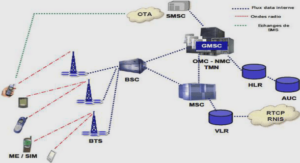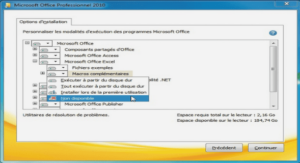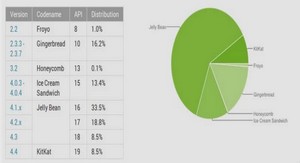Télécharger course wireless application group user agent profile specification, tutoriel free course PDF.
1 CONTENTS
2 REFERENCES
3 DEFINITIONS, ABBREVIATIONS, AND CONVENTIONS
3.1DEFINITIONS
3.2ABBREVIATIONS
4 INTRODUCTION
4.1SCOPE
4.2AREAS FOR FURTHER WORK
4.3RELATIONSHIP TO OTHER STANDARDS
5 END-TO-END ARCHITECTURE
5.1CLIENT DEVICE
5.2WIRELESS NETWORK
5.3WAP GATEWAY
5.4INTERNET OR INTRANET
5.5ORIGIN SERVER
6 USAGE SCENARIOS
6.1OPENING A WSP SESSION AND ESTABLISHING AN INITIAL UAPROF
6.2UPDATING THE UAPROF DURING AN ACTIVE WSP SESSION
6.3RESUMING A SUSPENDED WSP SESSION
6.4SUSPENDING AN ACTIVE WSP SESSION
6.5ISSUING A REQUEST FOR CONTENT
6.5.1 CPI Provided by the WAP Gateway
6.5.2 Overriding the CPI Within a Single Request
6.6PROVISIONED WSP SESSIONS AND CPI
6.7RESOLVING ATTRIBUTE VALUES IN THE CPI
6.8THIRD-PARTY REQUESTS FOR CACHED PROFILE, INCLUDING PUSH
7 COMPOSITE PROFILE SEGMENTS AND ATTRIBUTES
7.1SCHEMA LAYOUT
7.2USER AGENT PROFILE COMPONENTS
7.3ATTRIBUTES
7.4PROFILE
7.5USER AGENT PROFILE SCHEMA AND BASE VOCABULARY
7.6PROFILE EXAMPLE IN RDF
7.7EXTENSIONS TO THE SCHEMA/VOCABULARY
7.7.1 Addition of Components
7.7.2 Addition of Attributes
8 BINARY ENCODING OF USER AGENT PROFILES
8.1TOKEN DESCRIPTION
8.1.1 Global Extension Tokens
8.1.2 Tag Tokens
8.1.3 Attribute Tokens
8.1.4 Additional Tokens
8.2ENCODING SEMANTICS
8.2.1 XML Namespaces
8.2.2 Document Validation
8.2.3 Decoder Behavior
8.3NUMERIC CONSTANTS
8.3.1 Tag Tokens
8.3.2 Attribute Start Tokens
8.3.3 Attribute Value Tokens
9 USER AGENT PROFILE TRANSPORT OVER WSP
9.1INTRODUCTION
9.1.1 The CC/PP Framework and the CC/PP Exchange Protocol Over HTTP
9.1.2 Using WSP to Transport CCPP Profiles
9.1.3 Differences Between CCPP/HTTP and CCPP/WSP
9.2STRUCTURE AND ENCODING OF HEADER FIELDS
9.2.1 The Profile Header
9.2.2 The Profile-Diff Header
9.2.3 The Profile-Warning Header
9.3PROTOCOL PROCEDURES
9.3.1 Session Establishment
9.3.2 Combining Session and Request Headers
9.3.3 Header Translation Between CC/PP-WSP and CC/PP-HTTP
9.4STATIC CONFORMANCE REQUIREMENTS
10 ORIGIN SERVER BEHAVIOR
11 DEPLOYMENT CONSIDERATIONS
11.1CLIENT SUPPORT
11.1.1 Client Devices Not Supporting User Agent Profiles
11.1.2 Client Devices Supporting User Agent Profiles
11.2REPOSITORY SUPPORT
11.3GATEWAY SUPPORT
11.4INTERIM PROXY SUPPORT
11.5ORIGIN SERVER SUPPORT
A.1SUMMARY OF USER AGENT PROFILE SCHEMA
A.2SERIALIZED AND ABBREVIATED SYNTAXES
A.3CONNEG VOCABULARY
A.4SALUTATION VOCABULARY
A.5RESERVED ATTRIBUTES
A.6REQUIREMENTS
INTRODUCTION
DEFINITIONS, ABBREVIATIONS, AND ACRONYMS
REFERENCES
DESIGN ASSUMPTIONS
DESIGN GOALS
REQUIREMENTS
DESIRABLE FEATURES
OPEN QUESTIONS
A.7ACKNOWLEDGEMENTS
Résumé sur wireless application group user agent profile specification
Definitions, Abbreviations, and Conventions
The key words « MUST, » « MUST NOT, » « SHOULD, » « SHOULD NOT, » « MAY, » and « MAY NOT » in this document are to be interpreted as described in RFC 2119 [RFC2119].
Definitions
Attribute: An RDF attribute refers to the data elements describing the CPI and is denoted as an RDF property. Each attribute is associated with a value or a list of values or resource.CC/PP Repository: A server that stores CPI persistently in a form that may be referenced by and incorporated into a profile. A CC/PP repository is typically a Web server that provides CC/PP profiles in response to HTTP requests.Component: Elements of a high level classification of the information in the CPI. For UAProf, these include HardwarePlatform, SoftwarePlatform, NetworkCharacteristics, WAPCharacteristics, and BrowserUA. CPI: Capabilities and Preference Information pertaining to the capabilities of the device, the operating and network environment, and user’s personal preferences for receiving content and/or resource. CPI are represented by means of a Profile.
Gateway: Software that is capable of bridging disparate network protocols. For the purposes of this specification, “gateway” refers to protocol bridging functionality, which may exist in a stand-alone gateway or may be colocated with a proxy or origin server.
Abbreviations
For the purposes of this specification the following abbreviations apply.
CC/PP Composite Capability/ Preferences Profiles
CC/PP-HTTP CC/PP Exchange Protocol over HTTP
CC/PP-WSP CC/PP Exchange Protocol over WSP
CPI Capability and Preference Information
HTML Hyper-Text Markup Language
HTTP Hyper-Text Transfer Protocol
IANA Internet Assigned Numbers Authority
P3P Platform for Privacy Preferences Project
RDF Resource Description Framework
SiRPAC Simple RDF Parser and Compiler
UAProf User Agent Profile
URI Uniform Resource Identifier
Introduction
Existing markup languages and content written in those markup languages presume that devices have similar display sizes, memory capacities, and software capabilities. Content is also largely oblivious to the available network bandwidth and perceived network latency. As WAP-enabled devices come of age, this homogeneity assumption is no longer universally valid. In particular, mobile devices can be expected to have an an ever-divergent range of input and output capabilities, network connectivity, and levels of scripting language support. Moreover, users may have content presentation preferences that also cannot be transferred to the server for consideration. As a result of this device heterogeneity and the limited ability of users to convey their content presentation preferences to the server, clients may receive content that they cannot store, that they cannot display, that violates the desires of the user, or that takes too long to convey over the network to the client device.
Scope
The user agent profile is concerned with capturing classes of device preference information. These classes include (but are not restricted to) the hardware and software characteristics of the device as well as information about the network to which the device is connected. The user agent profile contains information used for content formatting purposes. A user agent profile is distinct from a user preference profile that would contain application-specific information about the user for content selection purposes. For example, a user preference profile might designate whether the user is interested in receiving sports scores and, if so, the particular teams. The specification of user preference profiles is beyond the scope of this document.
……..
Course wireless application group user agent profile specification (481 KO) (Cours PDF)




